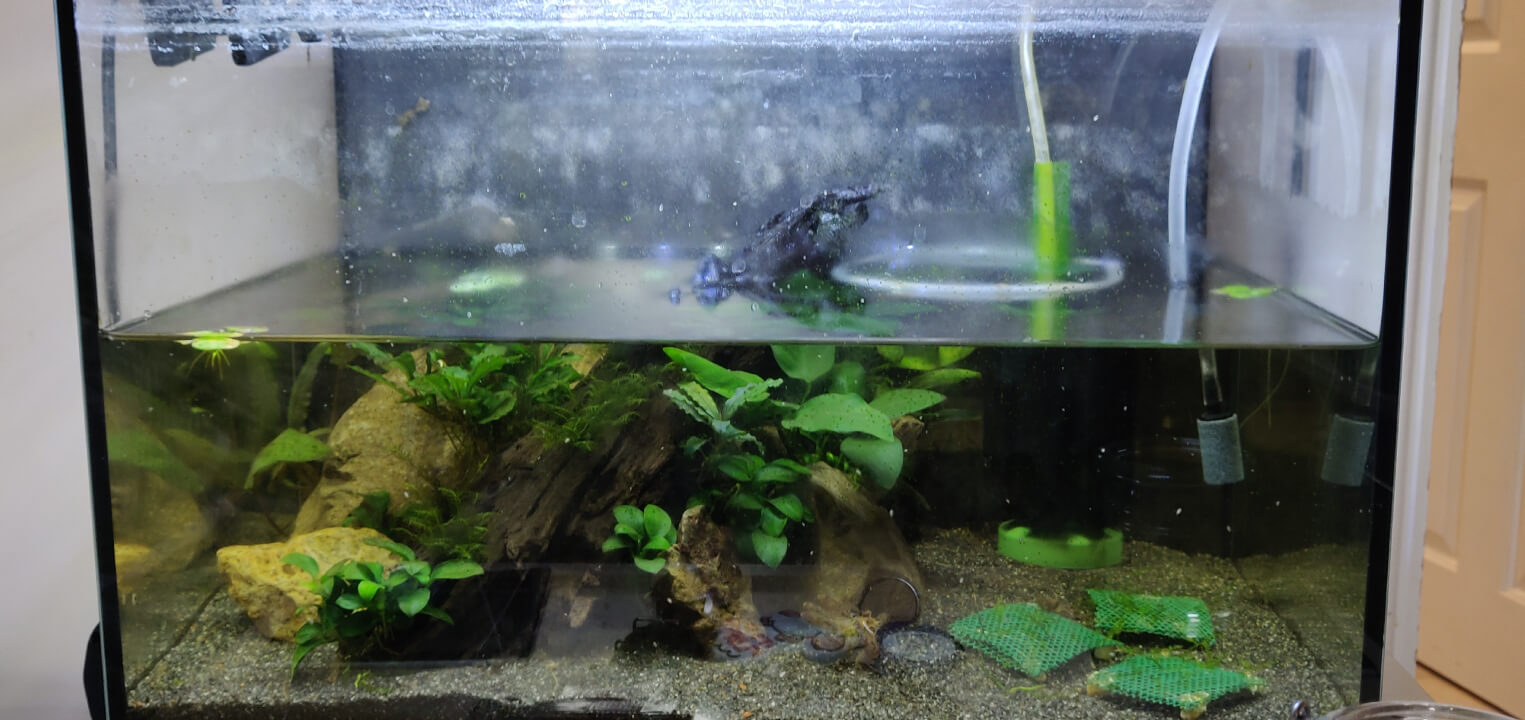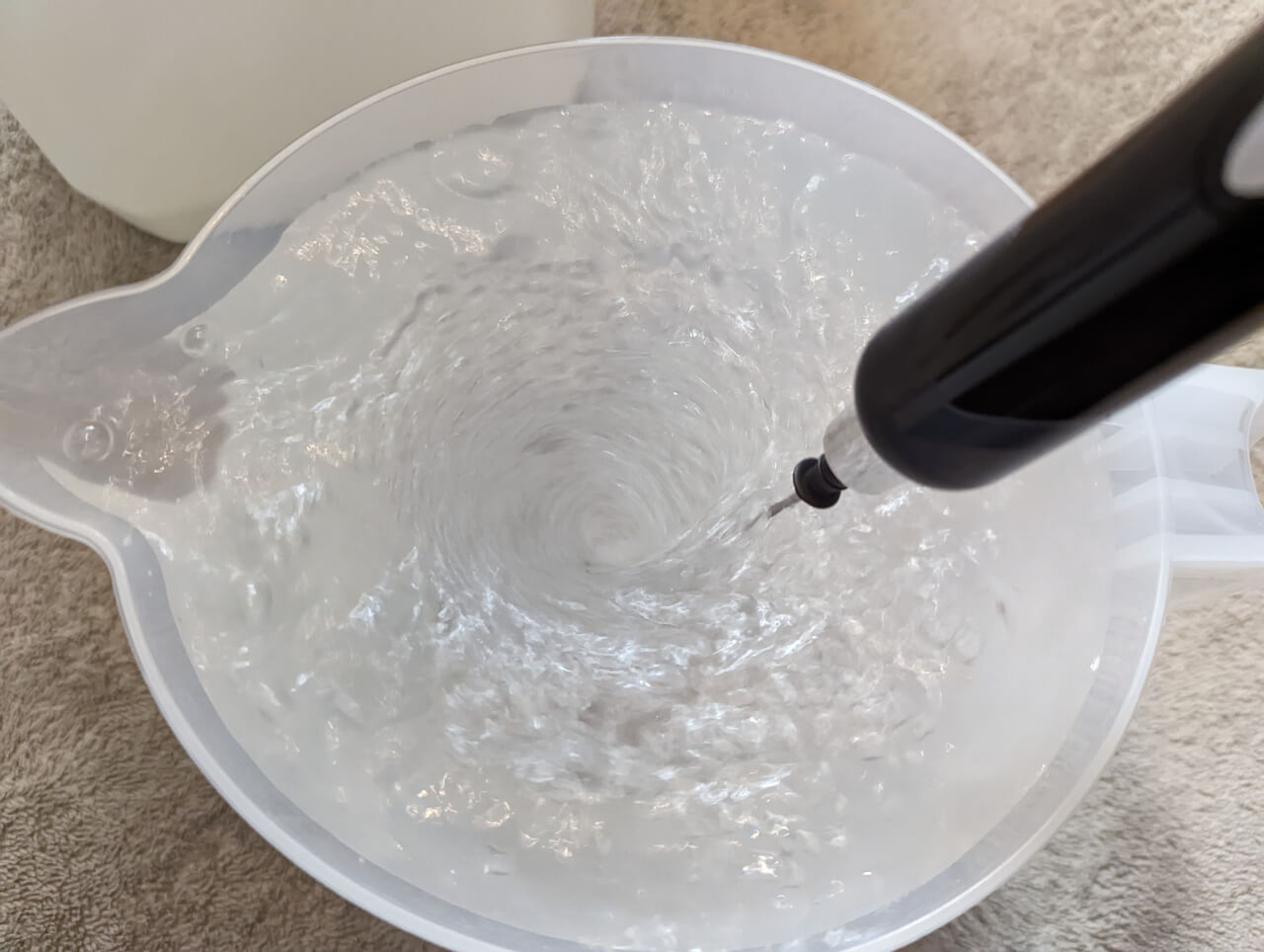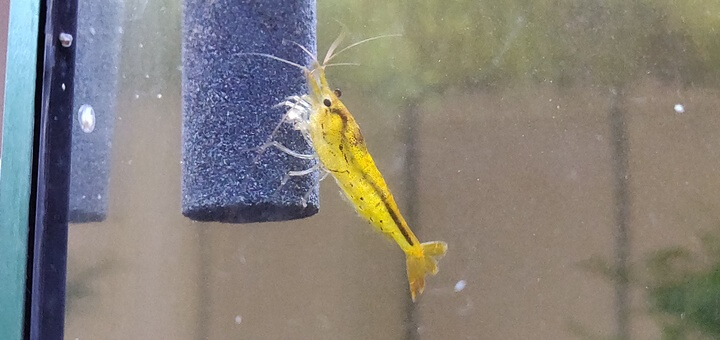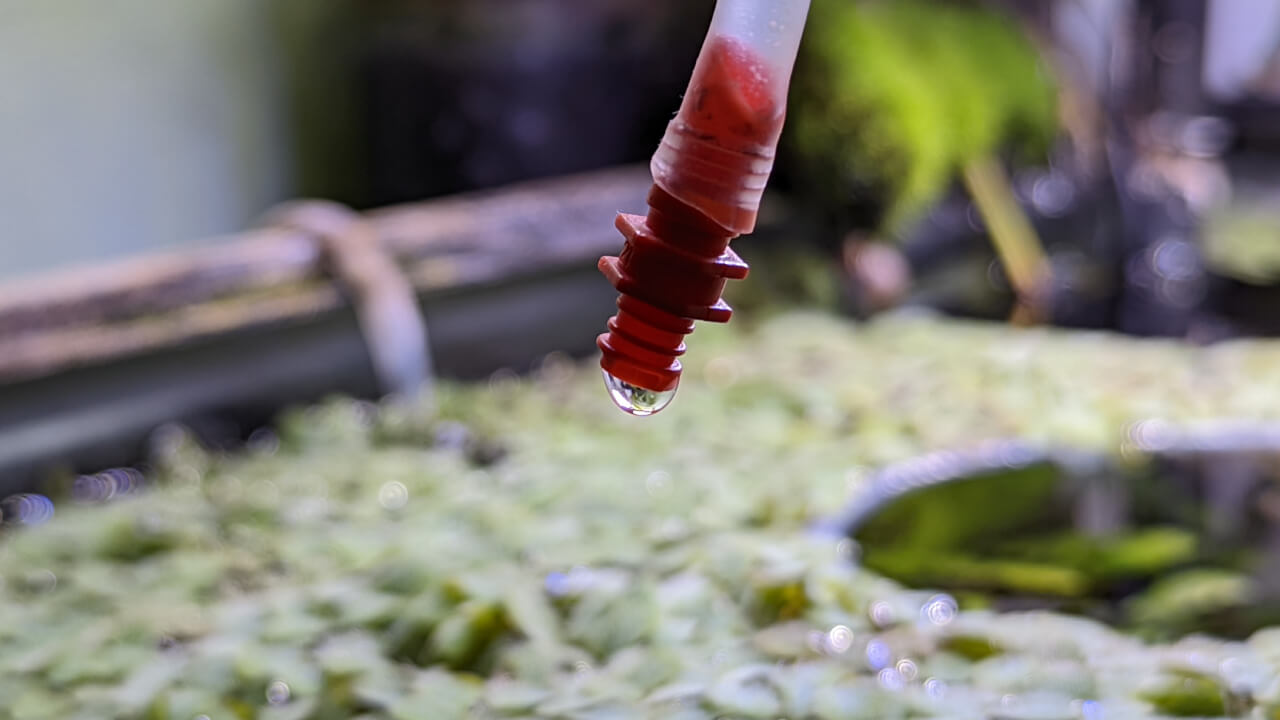Water changes are very important for maintaining a healthy shrimp tank.
Replacing the water has a few benefits and other effects:
- Lowers nitrates
- Adds more calcium, required for healthy molting and shell growth
- Reduces free-floating algae
- Reduces tannin colour from blackwater tanks
How much water should you replace?
You want to replace just enough water that you’re keeping nitrates low, and providing enough calcium for the shrimp.
As a rough guideline, you could start with a plan to change 10% of the water every two weeks.
Try to be consistent with a water change schedule, rather than waiting until your parameters get too bad. Shrimp are sensitive little creatures and thrive in stable parameters.
Remember: less is more. Performing water changes too often can stress the shrimp and cause health problems.
You should measure your core water parameters regularly:
These measurements will help you to know if you should increase your water changes.
In very rare cases, like adding medication into the tank, you might need to perform a large water change. As an example, you may need to replace about 50% of the water after adding chemicals to treat a hydra infestation.

Signs you need to change more water
- Failed molts
- Climbing nitrates level
- Dirty looking water
A rising GH value could be an indication the new water has a bit too much calcium, and could eventually cause molting problems. The extra calcium causes the shrimp’s exoskeleton to grow harder than normal, and they then get stuck in their molt.
Nitrates should be kept under 20ppm to keep your shrimp happy and healthy. If you find it’s steadily climbing, then you should probably increase your water changes a little, or add floating plants to absorb them.
Dirty water is another sign you should change more water. Over time, more dirt and waste dissolves into it and can make it look unclean.
Free floating algae in the water can give it a green tint, replacing a portion with fresh water will reduce this.
You may also just need to clean your sponge filter more often.
How to perform a water change
- Prepare the new water
- Take out around 10% of the old water
- Drip acclimate the new water back in
Preparing fresh water
Getting your new water ready first is a great idea. With tap water, you can let it adjust to the room temperature while you take out the old water. You’ll also give your dechlorinator plenty of time to work and make your water safe.
If instead you use remineralized water, this will give your salt more time to dissolve. It’s important to make sure your salts have completely dissolved before adding the water into your tank, otherwise the TDS and hardness can creep up as it continues to dissolve.
Make sure you use the correct water parameters in your new water. You probably don’t want to use tap water if you’re using buffering substrate in a Bee shrimp tank, as the KH content will exhaust your substrate much faster.
Remineralizing your own reverse osmosis (RO) water is highly recommended, especially for Bee shrimp.

Remove the old water
Take note of how much water you remove, so you know how much clean water needs to go back in. Guessing and getting it wrong can lead to overflowing tanks.
Keep an eye on your water level too if you’ve got a Hang on Back filter. You risk burning out the water pump if you drop the water level too low. It may be easier to temporarily turn off your filter until you’ve put enough water back in.
The simplest method is to just scoop out some water from the tank and pour it into a jug or other container.
You may accidentally pick up shrimp using this method, though. They can hide amongst the roots of your floating plants, if you have them. Check the jug for any shrimp before you pour the old water away.
The recommended method is to create a siphon with airline tubing or a small hose, to suck water out of the tank. Exactly the same way you’d vacuum your substrate.
Any brave shrimp that loiter near the end of your siphon can normally be shooed away by shaking the tube near them.
Be careful with baby shrimp
Baby shrimp are absolutely tiny and almost invisible, so it can be very easy to accidentally suck them up when doing a water change.
Cover the end of the tube in the water with a fine mesh, like pantyhose or tights. This should be enough to keep the baby shrimp safe.
Another tip is to put an airstone on the end of your airline tubing. The porous material lets water through, but stops almost everything else getting past.

Drip acclimate back in
Use the drip acclimation method to add the fresh water into your aquarium.
You could argue this is slightly overkill, as your new water should already be as close as possible to their current parameters.
Dripping it in slowly will be the least stressful experience for them, though. There’s basically zero risk of temperature shock, for example.
Water changes done too quickly are a fairly common cause of dying shrimp, but using drip acclimation massively reduces the risk.
Tips
- Remineralize your water for perfect parameters
- Gravel vac at the same time
- Save the old water for cleaning your sponge filters
- Top off evaporation with RO water
1. Remineralize your water
Using reverse osmosis (RO) water with shrimp salt, you can mix water to the exact parameters you’re after.
There are many benefits to using remineralized water over tap water, but more control over your parameters is the big one.
2. Gravel vac
Whilst you’re using a siphon in the tank, you could also clean up the substrate a bit.
Vacuuming the substrate is completely optional, but doing it with a water change is more efficient.
3. Clean your sponges
You should clean your sponge filters every so often to keep your tank’s beneficial bacteria thriving, and your water looking clear.
Using the old water from your tank is the safest way to do so.
4. Top off with RO water
Over time, your water level will decrease as it evaporates.
You should try to keep the water level relatively stable so that the parameters like general hardness stay consistent too.
Topping off the tank with reverse osmosis water returns the mineral content and TDS level back to its original state.
If you add more tap water or remineralized water, you’ll get TDS creep and molting problems.

